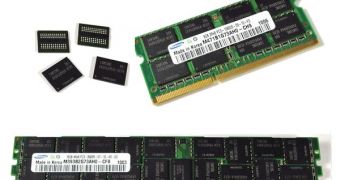While companies are posting more or less favorable financial results for the third quarter, at least compared to 2009, it seems that the DRAM market is still suffering from a pronounced decline in chip prices.
Apparently, orders for DRAM chips have become so weak that, according to certain reports, prices will keep decreasing throughout the entire fourth quarter.
ASPs (average selling prices) have been going down, to the point where mainstream 2 GB DDR3 modules sold for about US$30.70 during the first half of October. This corresponds to an overall decrease of 10%.
Similarly, DDR2 modules of the same density fell by 5% during the same period, their average price reaching US$32.
The weak demand among all major OEMs is, of course, one of the major reasons for this downward price pressure.
Now that the inventory pre-stock for Thanksgiving and the year-end holidays has already been completed, most OEMs are buying solely for inventory replenishments and avoiding strategic buildups.
The other reason is the sheer supply of chips that has appeared as a consequence of what is known as process migration.
To be more specific, vendors have been increasing their output as they migrated to the 40nm and 50nm manufacturing processes.
As such, in order to increase the rate at which their inventories are exhausted, they have been engaging in competitive pricing tactics, even using sharp price cuts for the 4GB DDR3 modules as part of their tactics.
Prices should keep dropping by the end of the year and most OEMs will keep their content per box below 3GB during Q4.
This will lead to a decline of 35% on quarter per Gb of DDR3, to US$1.55.
Granted, consumers may, of course, be quite thrilled to know that they have a chance of buying cheaper memory, but suppliers are unlikely to share this enthusiasm knowing that it won't lead to a strong enough demand.

 14 DAY TRIAL //
14 DAY TRIAL //